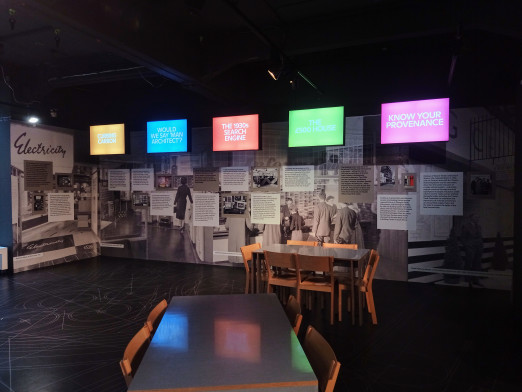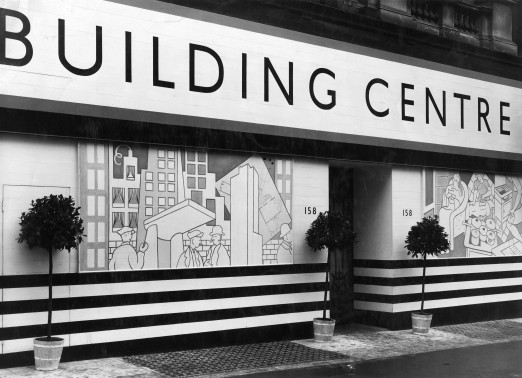The Le Corbusier exhibition was brought to the Building Centre by founder and director Frank Yerbury, from 3 February to 6 March 1959.
The Building Centre started to come to life in 1925, when the Architectural Association's School Secretary Frank Yerbury was asked by architect G. Grey Warnum for use of a room in the AA basement to show a client (whose house he was designing) three samples of brick. After the choice was made the brick samples remained, and the number of samples and phone calls for technical information grew. The Samples Room eventually transferred to larger premises, and in 1931 a permanent Building Centre was born.
The Building Centre's increasing presence in the public eye was largely due to Frank Yerbury's 'flair for publicity' and the series of exhibitions he developed. Yerbury was an avid and respected architectural photographer, and was the first to publish photographs of Le Corbusier's early works in Britain. Therefore it was fitting that he should organise an exhibition of Le Corbusier's work at the Building Centre.
Celebrating Le Corbusier’s 70th birthday, the exhibition featured his various works in four mediums; Architecture, Painting, Sculpture and Tapestries. The talk series included Jane Drew, Peter Smithson, Ernő Goldfinger and James Stirling as speakers. The whole programme attracted 37,248 visitors in just five weeks.
A printed exhibition guide included short essays by Jane Drew, art historian Sir Herbert Read, architecture critic Sigfried Giedion and an extract from Le Corbusier himself. The essays emphasise Le Corbusier’s undeniable influence on architecture internationally, but it is interesting that their primary focus was on the art, poetry, emotion and spirit Le Corbusier’s applied to his work, rather than details of the work itself.
“He is a dedicated man searching for ideal form, a man who believes that architect, painter, sculptor, craftsman or town planner are but different expressions of the same sensibility.” – Jane Drew
Large photographs, plans and fourteen models of his architectural projects from around the world were featured in the exhibition, with particular appreciation amongst the critics for his models.
“The focus of the exhibition is the beautiful models, particularly that of the Unité in polished wood. It is a delightful object in itself, somewhat non-representational but recalling the craftmanship of the old marine model.” – James Gowen for the Architect & Building News, 11th February 1959
Le Corbusier’s work in Chandigarh (for which he was appointed by the Indian Government to be architect of the capitol and to plan the metropolis with Jane Drew and Maxwell Fry) was one of his many architectural projects in the exhibition.
Other projects exhibited included:
Villa Savoye, Poissy
This family home was built by Le Corbusier and his cousin, Pierre Jeanneret between 1928 and 1931. The project became one of his most famous pieces of work for its use of reinforced concrete and representation of the 20s and 30s modernist architectural movement.
Notre Dame du Haut, Ronchamp
Le Corbusier was commissioned to rebuild the Roman Catholic chapel in 1954, after the original had been damaged by the war. Le Corbusier applied his working aid The Modular for this project, a measurement he devised based on the proportions of the human body, the development of which was shown in the exhibition.
The chapel is devoid of ornaments, the appearance sculptural-like with its geometrical walls and concrete roof. The asymmetric positioning and size of the windows creating an unusual and spiritual interior light.
“Are poetry, beauty and harmony part of the life of the modern man or does there only exit for him the mechanical functions of the machine for living in. It seems to me that the search for harmony is the finest human passion. It is infinite and yet the goal is an exact one. It is broad for it embraces everything.” – Le Corbusier
A downloadable PDF of the 1959 exhibition handbook, with the complete works of Le Corbusier featured in the exhibition can be found below.
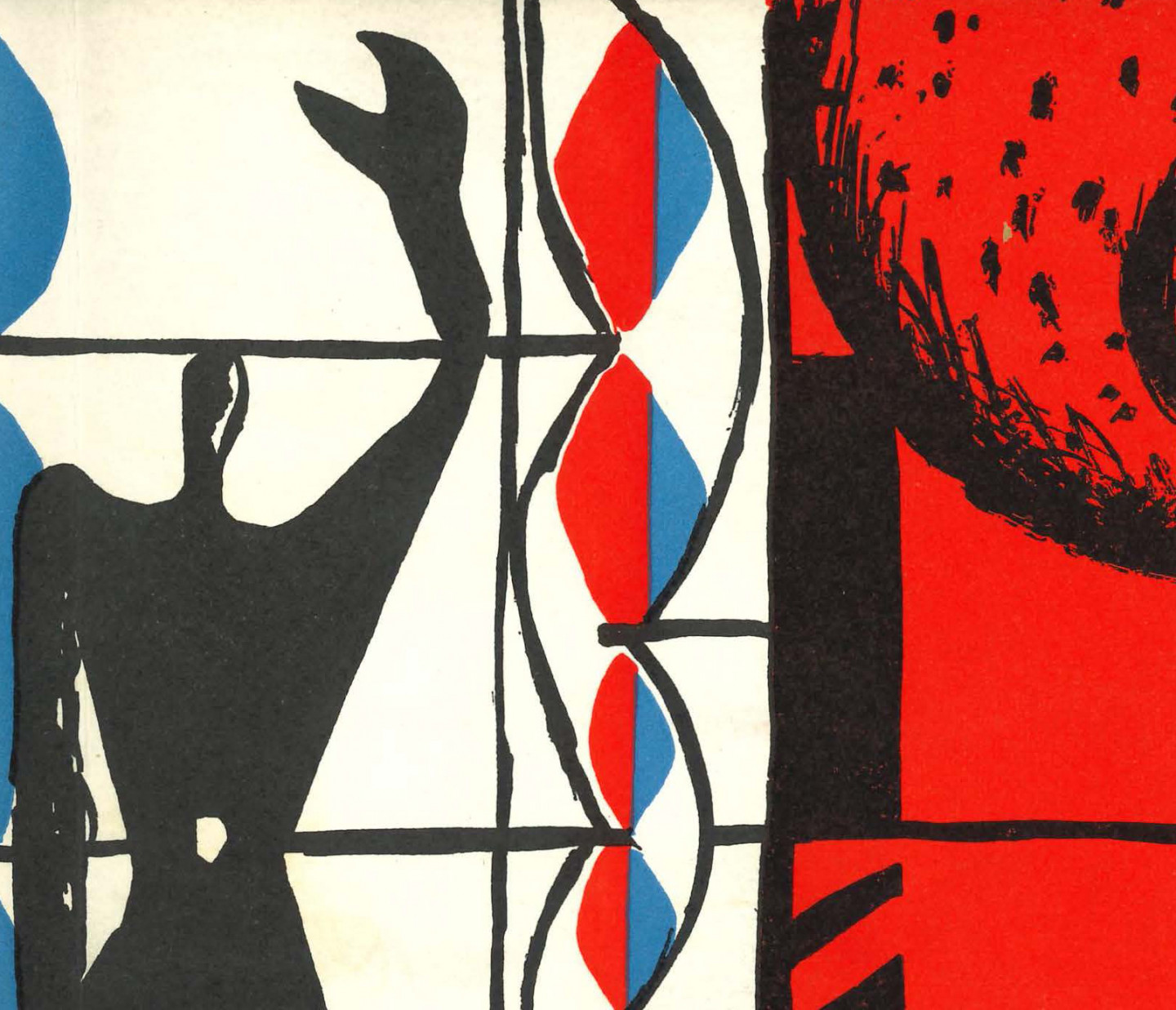
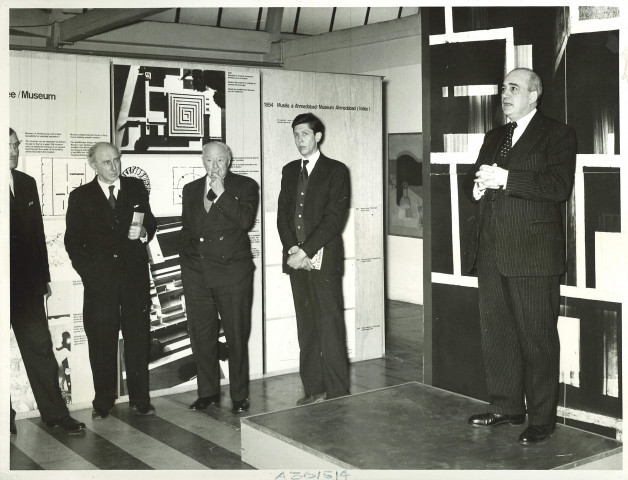


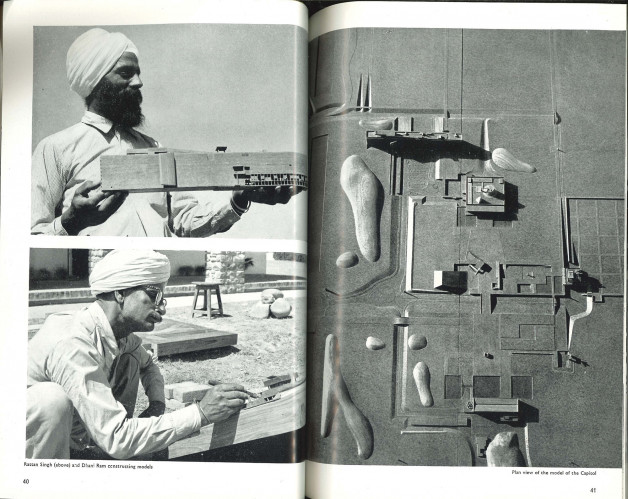
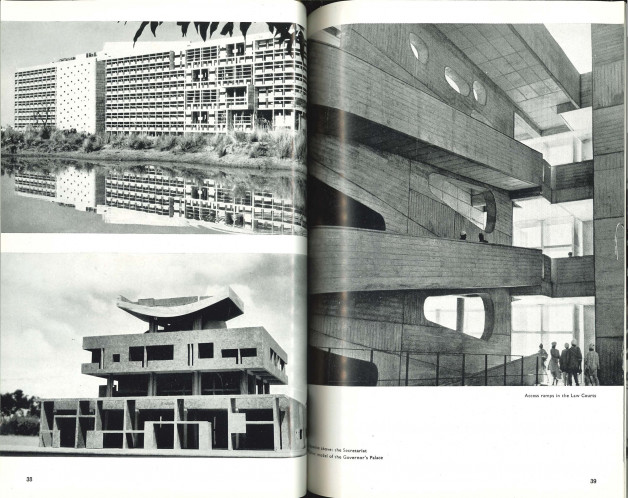
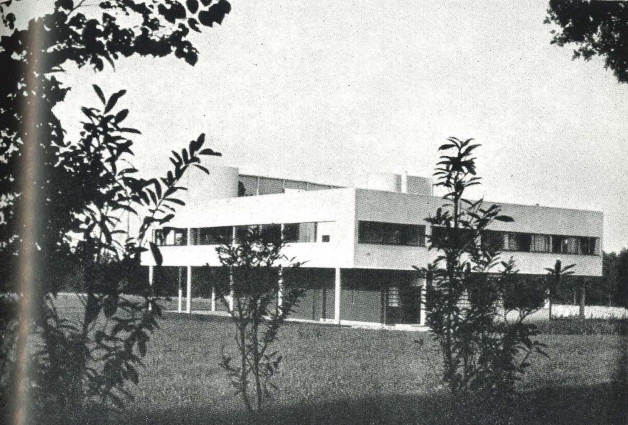
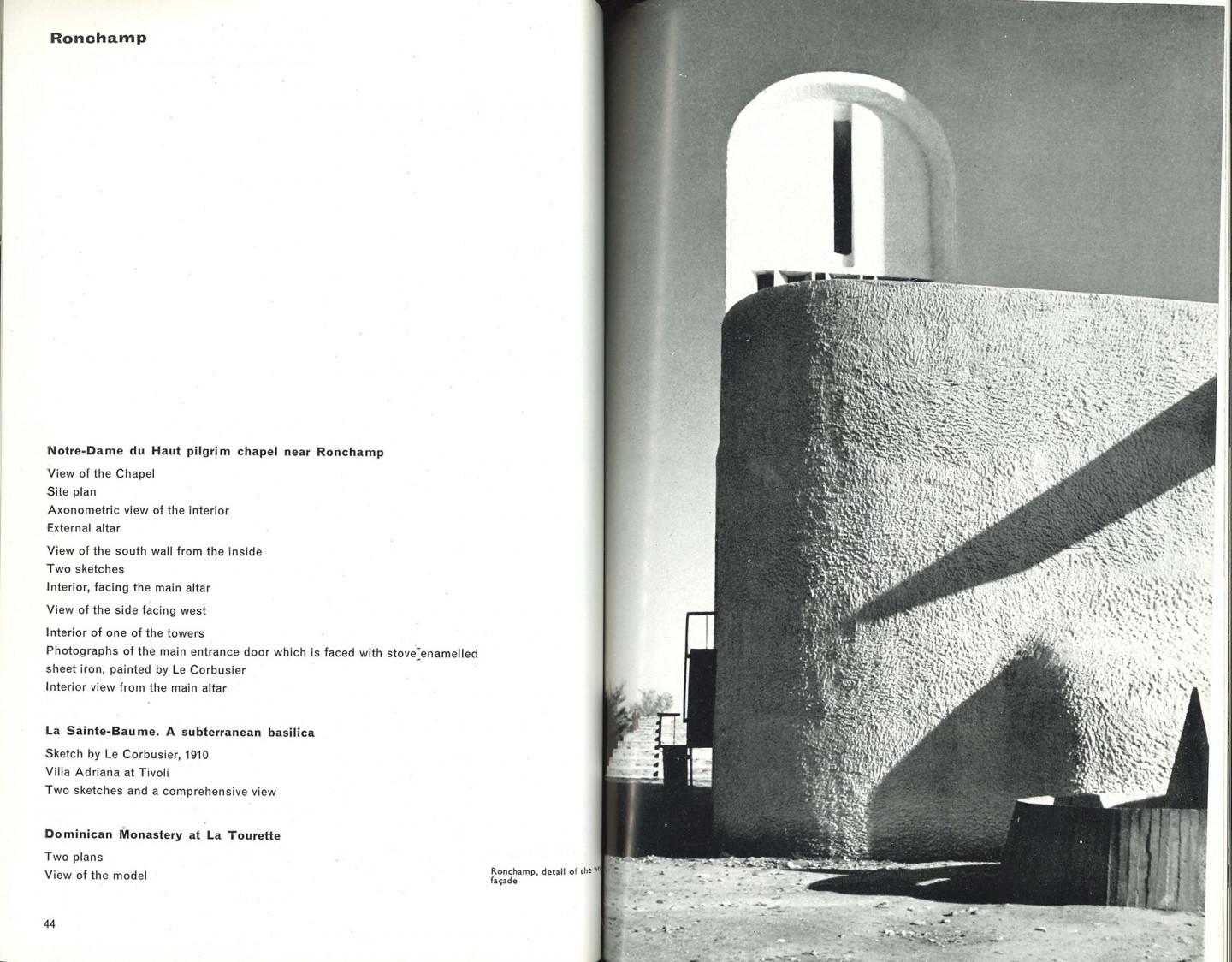
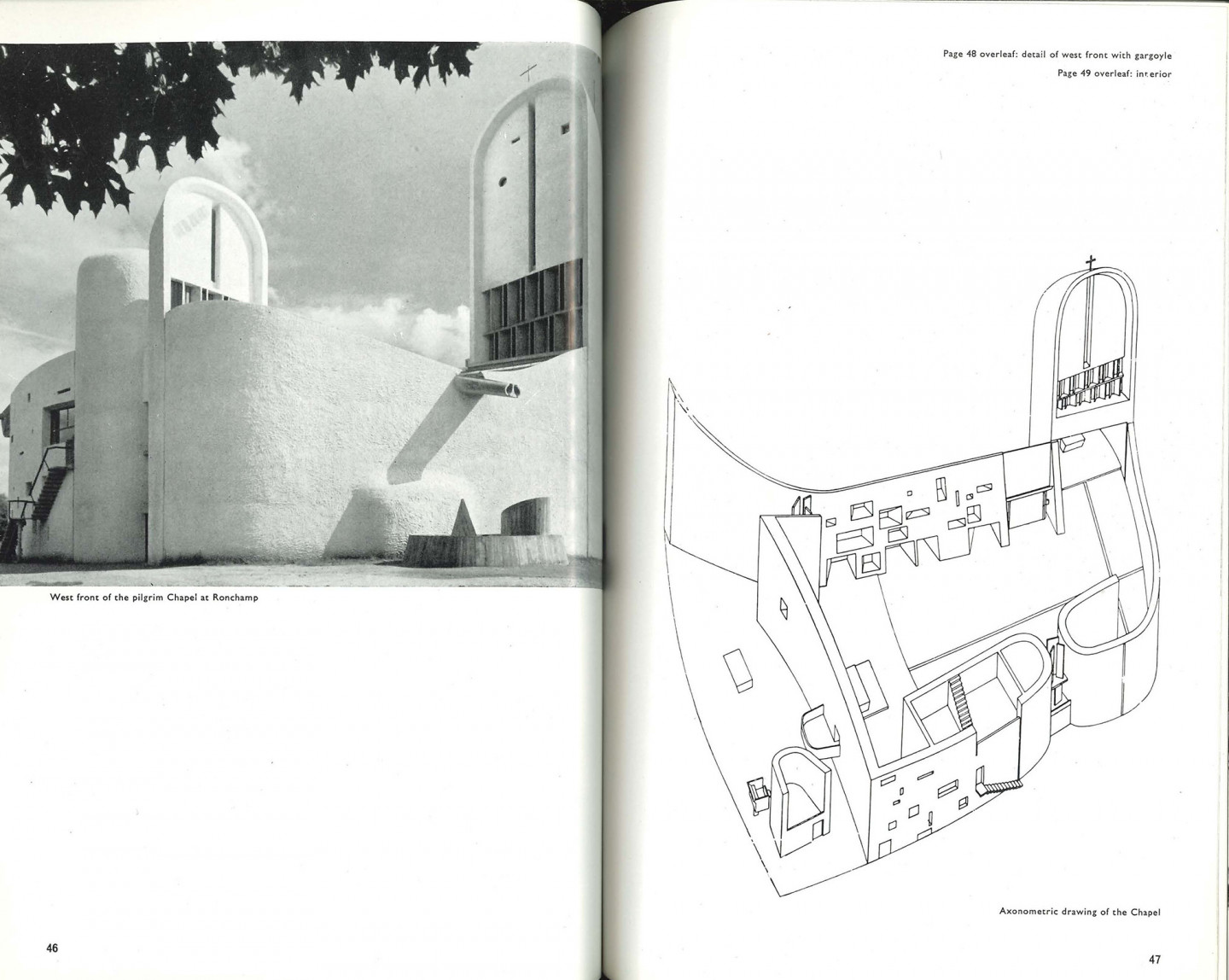
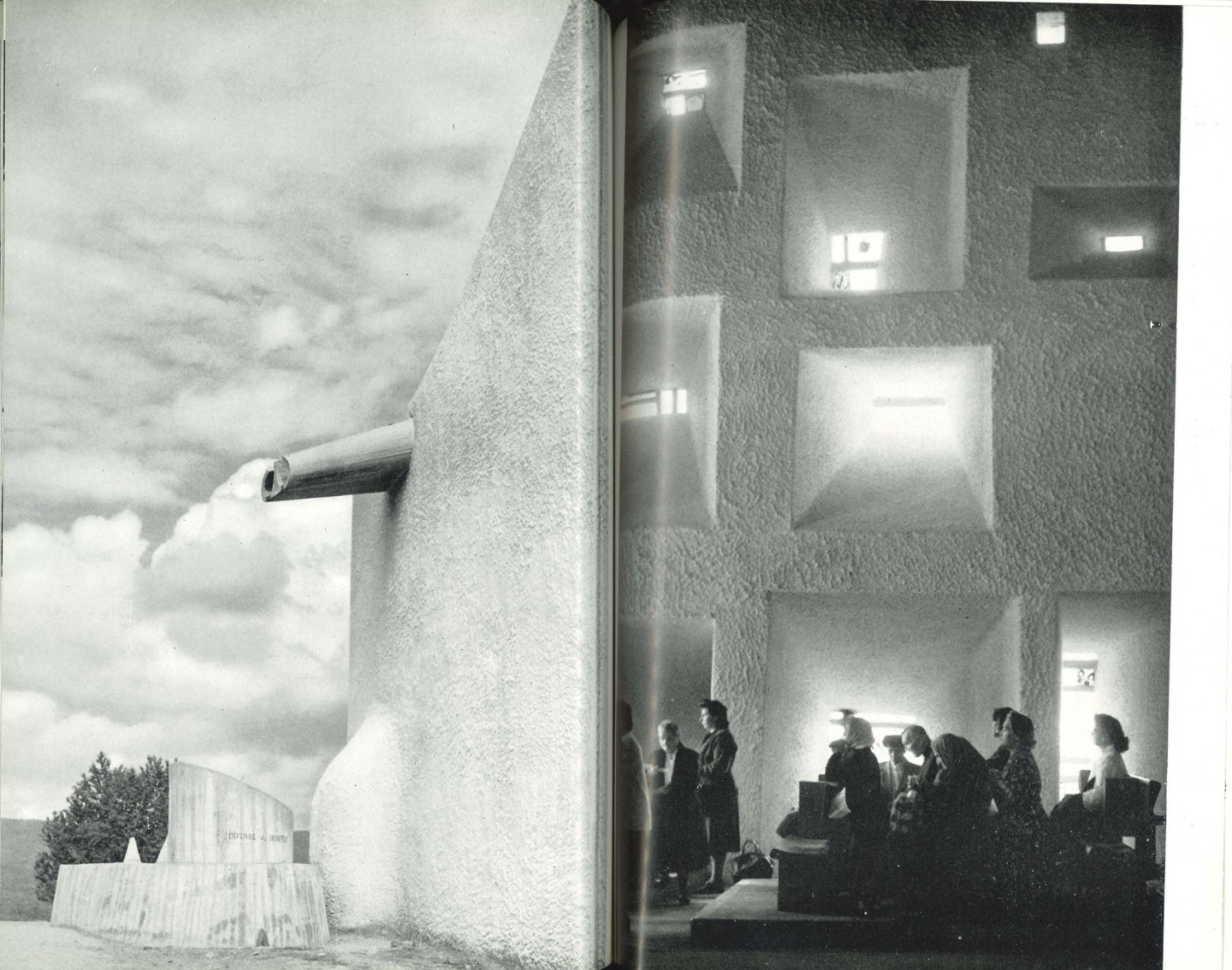
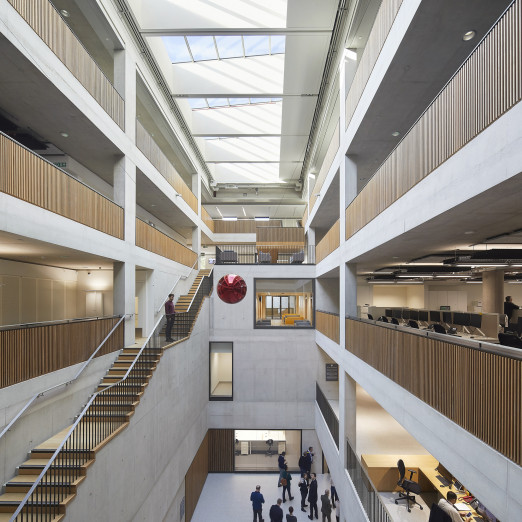
.jpg)
